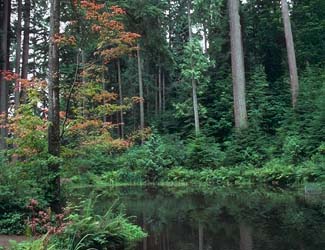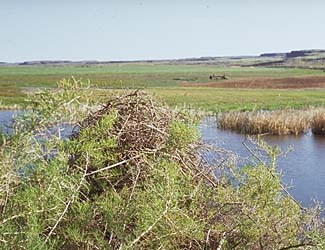
Home | About Us | Maps | Animal Facts
GAP Analysis Predicted Distribution Map

Home | About Us | Maps | Animal Facts
Species Code: CHPI
|
Distribution and Habitat Requirements
The Painted turtle is one of two turtle species whose cold-tolerance hass allowed for its more northern distribution (Holman and Andrews, 1994). This species has been observed at waste water ponds amid agricultural fields (Lindeman, 1991), but is more commonly found in marshy ponds, small lakes and slow-moving streams and rivers with an abundance of aquatic vegetation (Brown, 1985; Mitchell, 1988; Nussbuam et al., 1983). Only adults have been recorded in certain populations in Idaho and Montana (Charles Peterson, pers. comm.). The lack of young turtles might indicate low reproductive success in some areas.
The Painted turtle is possibly being displaced in western Washington urban lakes by the introduced Red-eared slider.


|
Models
All ecoregions throughout the State were selected, except for the Blue Mountains.
West of the Vascades crest, all low elevation zones were core. The Western
Hemlock zone was peripheral. East of the Cascades crest, Ponderosa Pine,
Oak, and all steppe zones were core. The Interior Douglas-fir, Grand Fir
and Interior Redcedar zones were marginal.
Good habitats were lakes, marshes, and riparian areas. Hardwood and hardwood/conifer forests were considered suitable in the steppe, Ponderosa Pine, Oak, Interior Douglas-fir, Grand Fir and Interior Redcedar zones, because forests in these zones are often associated with wet, riparian areas.
Translated from the Washington Gap Analysis Amphibians and Reptiles Volume by Karen Dvornich
Webpage designed by Dave Lester.